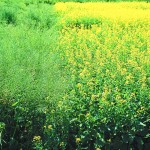Crop rotation is of utmost importance to manage residue and soil-borne diseases, and many insect species,” says Randy Kutcher, cereal and flax pathologist, University of Saskatchewan. Knowing this, it’s surprising that many growers still don’t heed rotation recommendations, especially with the potential for devastating diseases like blackleg. Blackleg is a residue-borne disease, he explains. “Residues […] Read more





